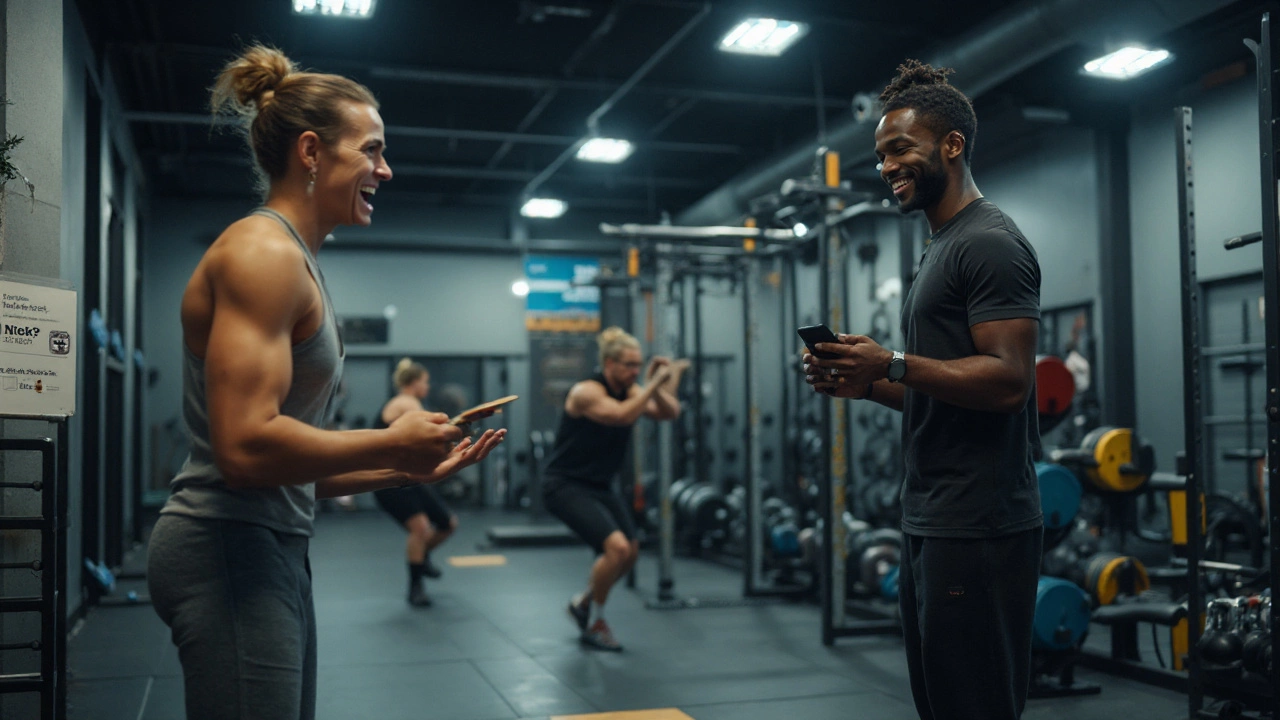Should a Beginner Get a Personal Trainer? UK Guide 2025

You want to start working out and you don’t want to waste money, time, or your knees. The big question: do you need a pro by your side, or can you learn the basics on your own and still see results? Here’s the honest, UK‑centric answer with a plan that keeps you safe and moving forward.
TL;DR
- Hire a personal trainer if you’re nervous about form, have a history of pain/injury, or know you won’t stay consistent alone.
- Skip (for now) if your goal is simple (move more, get a bit stronger), you like learning, and money is tight-use a structured plan and a short gym induction instead.
- Best value: 1-2 sessions/week for 4-8 weeks to learn the lifts, then taper to monthly check‑ins.
- UK costs in 2025: £35-£70/hour outside London; £55-£100 in London; small‑group and online options are cheaper.
- Safety first: If you answer “yes” on PAR‑Q+ or have a medical condition, speak to your GP and pick a trainer with Level 3, CIMSPA registration, insurance, and First Aid.
What you’re trying to get done (jobs‑to‑be‑done):
- Decide if a trainer is worth it for your situation and budget.
- Estimate realistic costs and how long you might need one.
- Choose smart alternatives if 1:1 isn’t for you.
- Know how to vet a trainer in the UK (qualifications, red flags).
- Get a simple beginner plan that’s safe and progressive.
- Remove guesswork: exactly what to do next week.
Quick answer: when a trainer is worth it (and when it isn’t)
Here’s the cleanest way to think about it. You’re buying speed, safety, and accountability. If you can get those three without paying for 1:1, great; if not, pay for a short, focused block.
Strong reasons to hire (now):
- You’re unsure about form with free weights or machines (especially squats, deadlifts, overhead presses).
- You’ve had pain or injury (back, knee, shoulder), or you’re post‑natal, returning after a long break, or 55+ and want confidence with strength training.
- You’ve started and stopped many times. You need someone expecting you to show up.
- You’ve got a time‑bound goal: first 5K in 10-12 weeks, wedding in 12 weeks, job fitness test.
- Gyms make you anxious and you want a clear, friendly path in.
Reasons to wait or skip (for now):
- Your goal is simple: move 3×/week, feel fitter, get a bit stronger, no aches or medical flags.
- You like learning through videos/checklists and can stick to a plan with a friend or class.
- Your budget is tight. You’ll get more out of a good program plus a gym induction, then a few check‑ins later.
Reality check on progress: Most beginners can add noticeable strength in weeks (because your nervous system learns fast) and lose ~0.25-0.5 kg fat per week with consistent training and nutrition. That lines up with ACSM and UK guidance: 150+ minutes moderate cardio weekly and 2+ days of strength training is the long‑term baseline. Supervision helps beginners learn safe technique quicker and reduce common errors-exactly where trainers add value.
A fair middle ground: do a 4-8 week “skill block” with 1-2 sessions per week to learn technique, then taper to monthly reviews. You keep the confidence and structure without paying forever.

How to decide: a simple step‑by‑step plan
Follow this like a recipe. You’ll know in 10 minutes whether to book someone-and how.
-
Set a 4‑week target, not a fantasy. For example: “Work out 3×/week and learn safe form on five key moves.” Or “Jog 20 minutes without stopping.” Beginners often progress fastest in month one. Keep it focused and measurable.
-
Do a quick safety screen (PAR‑Q+). If you answer “yes” to health questions or you have a condition (e.g., cardiovascular, diabetes, joint replacements), speak to your GP first. Many UK gyms ask for PAR‑Q+ at signup. Look for trainers comfortable working alongside medical advice; NICE and ACSM both support progressive strength and aerobic training for most adults when cleared.
-
Choose your support type with a tiny decision tree.
- If you’re nervous about form or have aches → 1:1 or small‑group PT for 4-8 weeks.
- If you’re confident, just need structure → Online coaching or a clear beginner program + occasional technique checks.
- If you crave community → Small‑group training or beginner‑friendly classes.
- If money is tight → Gym induction + a good app + a friend for accountability.
-
Budget smart. In 2025, typical UK rates: £35-£70/hour outside London, £55-£100 in London. Most beginners need 4-12 sessions to nail technique. A good rule: spend for skills early, then switch to self‑directed training with periodic check‑ins.
-
Vet properly (UK‑specific).
- Minimum Level 3 Personal Trainer qualification (Ofqual‑recognised).
- CIMSPA membership or registration (shows current CPD/standards).
- Public liability insurance and current First Aid certificate.
- Ask for: their process for beginners, how they teach form, how they track progress, and how they adapt for injuries.
- Red flags: fasted cardio mandates, cookie‑cutter programs, no screening, “no pain, no gain” mindset, big promises in 2-3 weeks.
-
Trial before you commit. Book a single session or a short taster pack. You should leave feeling more confident, not smashed. Ask them to coach your squat, hinge (hip‑hinge/deadlift pattern), push, pull, and carry. Do you understand their cues? Do they adjust the plan to your body, not the other way round?
-
Use a proven beginner structure (with or without a trainer).
Two to three full‑body sessions per week work wonders. Keep sessions under an hour. Use RPE (Rate of Perceived Exertion) 6-8 for your main lifts-challenging but with 1-3 reps “in the tank.”
- Warm‑up: 5-8 minutes: brisk walk or bike + dynamic moves (hip circles, arm sweeps, bodyweight squats).
- Strength (30-35 min):
- Squat pattern: goblet squat or box squat 3×6-10
- Hinge pattern: hip hinge drill + Romanian deadlift 3×6-10
- Push: incline or flat dumbbell press 3×6-10
- Pull: cable row or assisted pull‑up 3×8-12
- Core/carry: dead bug 2×8/side or farmer’s carry 3×20-30 m
- Conditioning (10-15 min): bike, rower, brisk incline walk, or jog-easy‑mod effort. Aim to build to 150+ minutes/week over time.
- Cool‑down: 3-5 minutes easy cardio + 2-3 stretches that feel good.
Progression: If you hit the top of a rep range with solid form, add a small weight next time (e.g., 1-2.5 kg). Keep a log: exercise, sets, reps, weight, RPE. Progress beats perfection.
-
Track what matters. Week to week, look for: +1-2 reps or +1-2 kg on your main lifts, stable energy, no new aches, and 2-3 workouts ticked off. Adherence above 80% is where results live.
- Coach’s tip: Film one set of your main lift from the side and from the front. Compare to a credible teaching video or ask gym staff for a quick check. Small tweaks pay off.

Costs, alternatives, and what to do next
Here’s how different options stack up in the UK in 2025. Prices vary by city and gym; these are common ranges I see across mainstream gyms and private studios.
| Option | Typical Cost (UK 2025) | What You Get | Best For | Trade‑offs |
|---|---|---|---|---|
| 1:1 Personal Training | £35-£70/hr (most UK cities); £55-£100/hr (London) | Technique coaching, tailored plan, accountability | Beginners who want fast, safe skill‑building | Highest cost; depends on coach quality |
| Small‑Group PT (2-5 people) | £15-£35 per person/session | Coaching + community at lower cost | Beginners who like groups and can share attention | Less individual focus than 1:1 |
| Online Coaching | £60-£180/month | Program + form checks via video + messaging | Self‑starters wanting expert guidance | No in‑person spotting; relies on your videos |
| Gym Induction/Technique Session | Often free to £30-£50 | Basic equipment tour + quick form tips | Complete beginners on a budget | Brief; not a full plan or ongoing coaching |
| DIY + App/Program | Free-£15/month | Structured workouts, videos, progression | Budget‑conscious and motivated | No live feedback; risk of form drift |
Alternatives that still work:
- Beginner‑friendly classes: strength foundations, lift intro, mobility, low‑impact circuits. Great for confidence and routine.
- Apps/programs: look for video demos, clear progressive overload, and beginner tracks. If you’re running‑curious, NHS Couch to 5K remains a solid path.
- Buddy system: pick a friend with similar goals. Put your three sessions in both calendars. Show up for each other.
- Monthly tune‑ups: even if you skip 1:1 weekly, book a 45‑minute technique and program check every 4-6 weeks.
How many sessions do most beginners need? Enough to learn the patterns and feel safe: usually 4-12 sessions. After that, self‑directed training with periodic coaching works well for most people.
Checklist: how to vet a trainer (UK)
- Level 3 Personal Trainer (Ofqual recognised) and CIMSPA membership
- Insurance (public liability) and current First Aid
- They ask about your health history and goals before programming
- They teach movement patterns, not random circuits
- They track something objective (loads, reps, RPE, times, steps)
- They explain why you’re doing each exercise in plain English
Red flags to avoid
- Promises of huge fat loss or a “body transformation” in a couple of weeks
- One plan for everyone; no screening; no notes
- Shaming language or pressure to train through pain
- Hard sell into long contracts before a trial
Beginner 4‑week blueprint (works with or without a coach)
- Week 1: Learn the movements. Light loads, high attention to form. 2-3 full‑body sessions.
- Week 2: Add a little weight or a rep where form is good. 2-3 sessions + 1-2 short walks/jogs.
- Week 3: Keep the same moves. Progress one small thing per session (set, rep, or load).
- Week 4: Hold steady or progress modestly. Book a technique check or film your lifts for review.
Nutrition basics to pair with training
- Protein: aim for a palm‑sized portion each meal (e.g., eggs, Greek yoghurt, beans, tofu, chicken, fish).
- Carbs around training: fruit, oats, rice, potatoes-fuel helps you train better.
- Hydration: a glass of water with each meal and one before training.
- For fat loss: a small, steady calorie deficit beats crash diets. Slow and steady keeps energy and performance.
Mini‑FAQ
- Do I need a trainer to avoid injury? Not always, but coaching speeds up learning and reduces common errors. If you’ve had pain before, get eyes on your form-at least for a few sessions.
- Is 30 minutes enough? For technique work and a focused full‑body circuit, yes. If you want long rest times for heavy lifts or extra conditioning, 45-60 minutes is easier.
- How often should I see a trainer? For beginners: 1-2×/week for 4-8 weeks, then monthly check‑ins.
- Will a trainer do my nutrition? Many can coach basic habits. For medical nutrition or complex issues, look for a Registered Dietitian or a trainer who collaborates with one.
- Online or in‑person? In‑person is best for first‑time lifters. If you’re comfortable filming lifts, online coaching can be very effective and cheaper.
- What if I’m shy or anxious? Ask for off‑peak sessions, quiet areas, and a simple plan that uses the same kit each time. Good coaches protect your focus and privacy.
- Can I change trainers? Yes. You’re hiring a service. If the fit is off, switch-professionals won’t take it personally.
Next steps
- If you have a medical condition or answered “yes” on PAR‑Q+: speak to your GP. Look for a trainer experienced with your condition, comfortable liaising with healthcare guidance.
- If you’re on a tight budget: book one technique session to learn the big lifts, then follow a solid beginner plan and schedule a check‑in every 4-6 weeks.
- If you train at home: get adjustable dumbbells, a sturdy bench, and a resistance band. Film your form and ask for feedback (online coach or gym staff on a drop‑in).
- If you’re 55+ or post‑natal: strength training is recommended when cleared-start lighter, prioritise form, and progress gradually. A few coached sessions build confidence fast.
- If you’re ready to hire: shortlist 2-3 trainers, check Level 3 + CIMSPA + insurance, book a consultation, and ask them to coach your squat and hinge in session one.
One last sanity check: your first month should feel like learning a skill, not surviving bootcamp. If you leave sessions understanding your body better, lifting with cleaner form, and actually wanting to come back, you chose right.